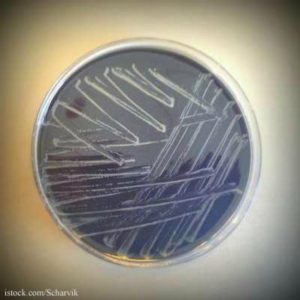The CDC has released more details about their investigation into the Salmonella Bareilly outbreak that has sickened 116 people in 20 states and the District of Columbia.
 Nakaochi Scrape, which is tuna scraped from the bone and chopped, from Moon Marine USA Corporation is “the likely source of this outbreak of Salmonella Bareilly infections”, according to the government. The CDC interviewed 53 of the patients about what they ate the week before they got sick. Forty-three of them (81%) reported eating sushi.
Nakaochi Scrape, which is tuna scraped from the bone and chopped, from Moon Marine USA Corporation is “the likely source of this outbreak of Salmonella Bareilly infections”, according to the government. The CDC interviewed 53 of the patients about what they ate the week before they got sick. Forty-three of them (81%) reported eating sushi.
This proportion is significantly higher than indicated in a FoodNet Survey conducted by the CDC for the years 2006 to 2007. In that report, on page 20, 5.3% of healthy adults reported consuming sushi in the past seven days.
Of those 43 people, 39, or 91%, reported eating a sushi item made with tuna, and 36, or 84%, reported eating a sushi item containing “spicy tuna”. Spicy tuna rolls are made with chopped tuna or Nakaochi Scrape.
Nakaochi Scrape looks like, and is, raw ground tuna. And when meat is ground or chopped, any bacteria on the surface of the meat is mixed throughout the entire batch. That makes raw fish made with this method, also called comminuted, very different from other types of sushi, in which the flesh is left whole.
And when food is produced on a large scale, as with this product, where more than 58,000 pounds, or 29 tons, were made and shipped around the country, problems with temperature control and cross-contamination can occur anywhere on the supply chain.
Food Poisoning Bulletin asked Michael Batz, Head of Food Safety Programs at the University of Florida Emerging Pathogens Institute, about this outbreak. He said, “we consume more perishable goods than we used to, and the items we’re consuming change all the time. I expect the trend for consuming raw finfish products – as in sushi – is much higher today than 20 years ago. Thus, I would say that the number of people affected in a wide geographic region, combined with a complicated supply chain, is indicative of a modern food safety challenge.”
The CDC states that seven clusters of restaurants or grocery stores, where two or more unrelated ill people ate, have been identified. The clusters are located in Connecticut, Maryland, Rhode Island, Texas, and Wisconsin. Information has been collected from four of the seven clusters as of April 13, 2012. An average of 61% of sushi orders in those clusters contained tuna.
The government recommends that anyone in a high risk group: infants, the elderly, pregnant women, the chronically ill, and those with compromised immune systems, refrain from eating raw or undercooked fish.
If you order spicy tuna roll or any food made from tuna from a restaurant or grocery store, ask to make sure it is not part of this recall. And if you or anyone you know has the symptoms of Salmonella poisoning, including diarrhea, often bloody, vomiting, and severe stomach cramps, see your doctor immediately and let her know what you’ve eaten in the past week.




